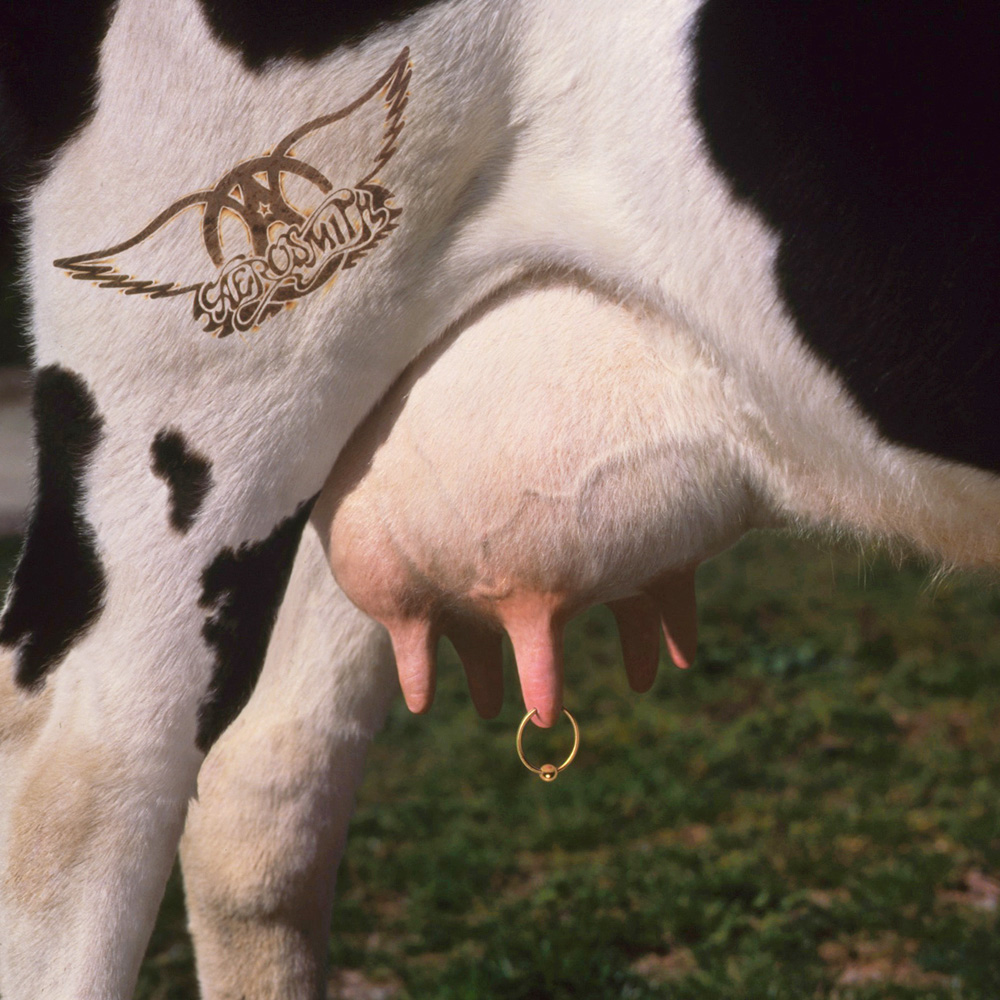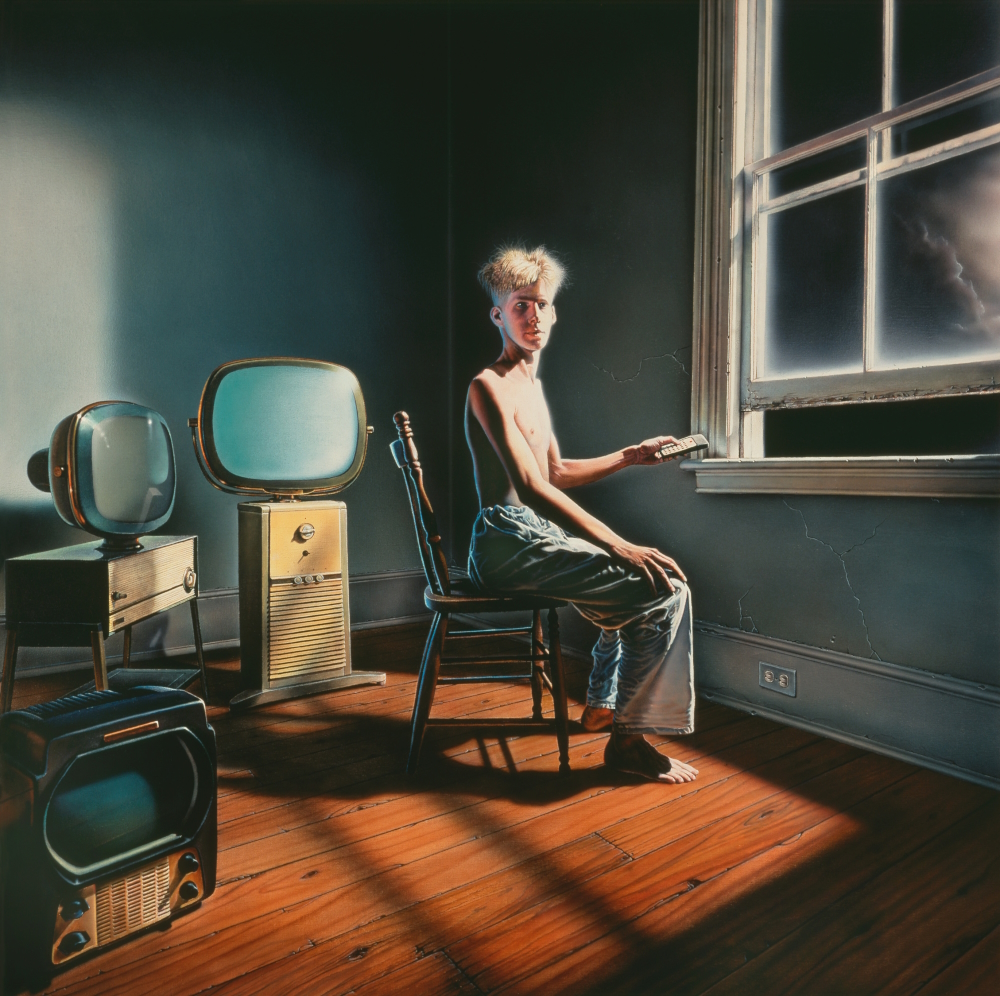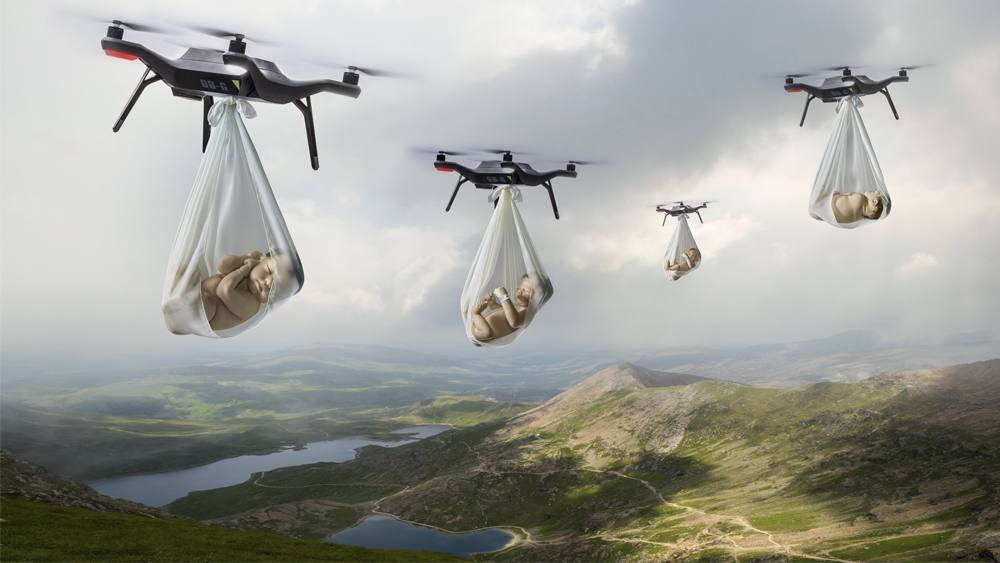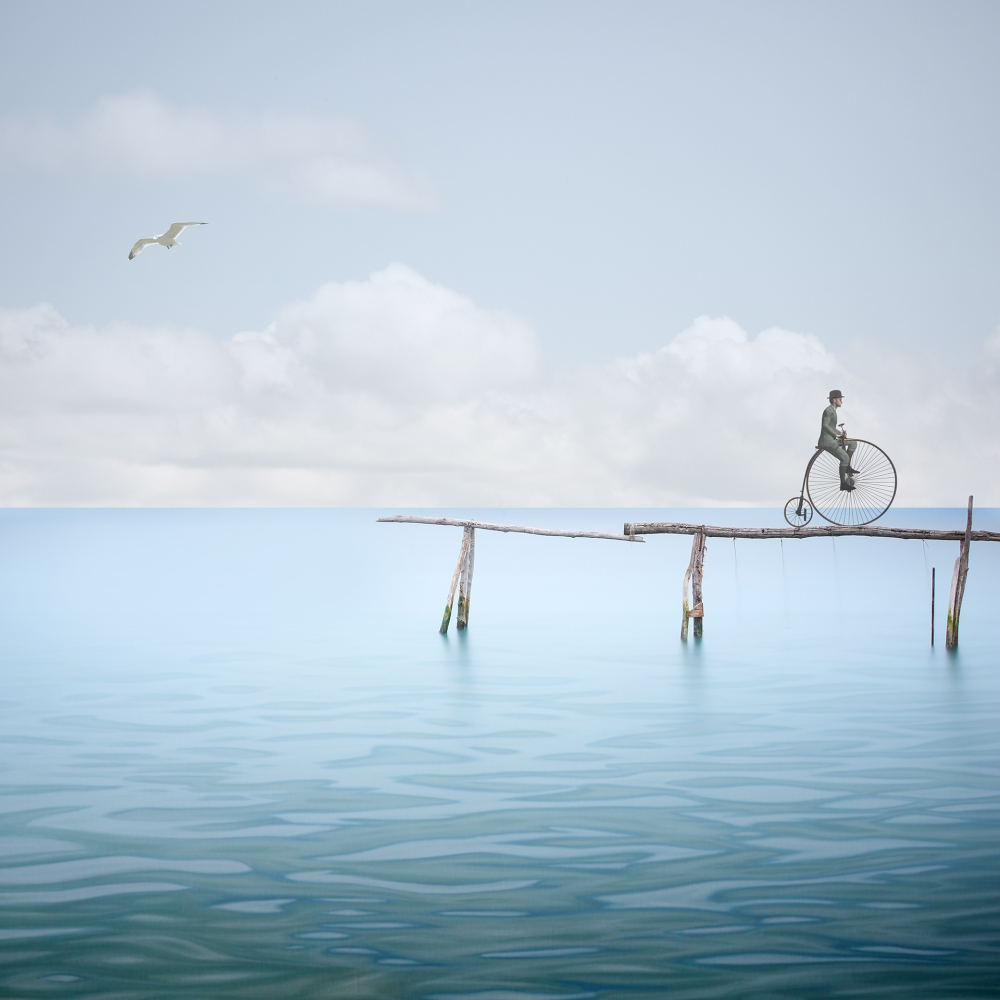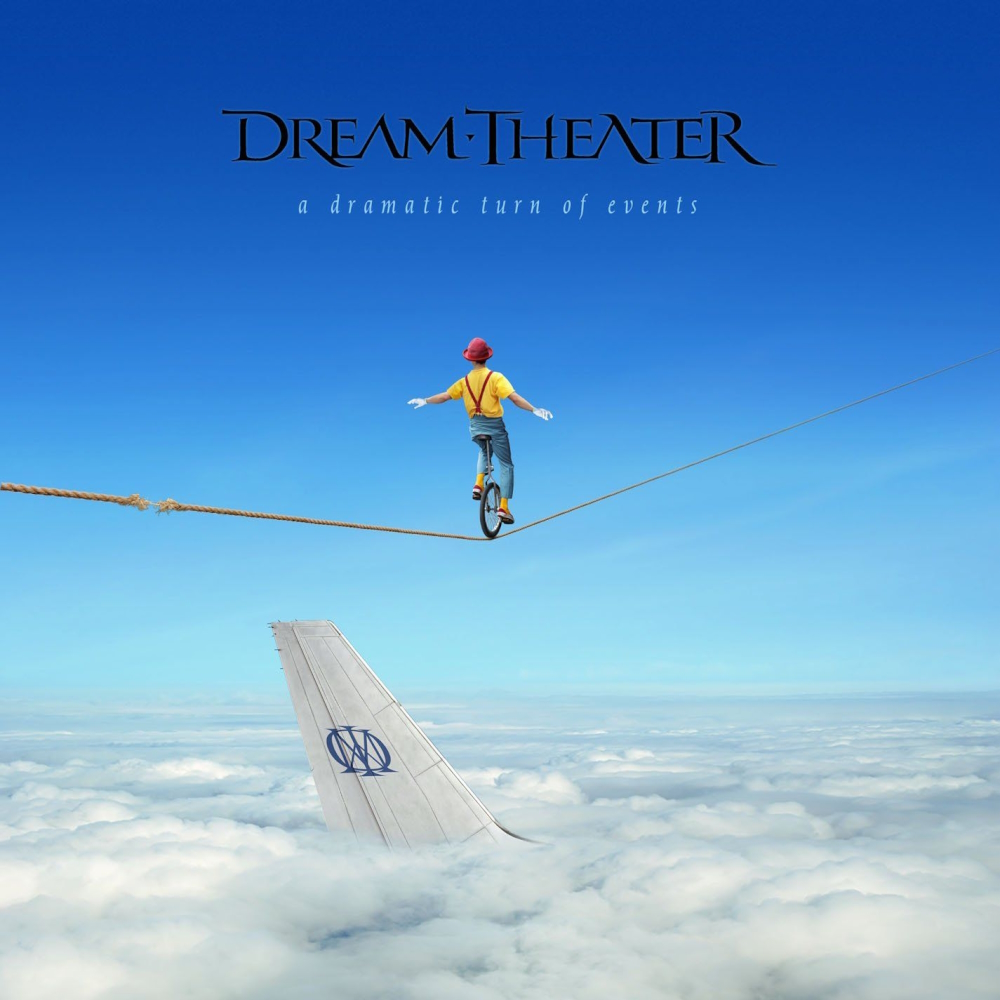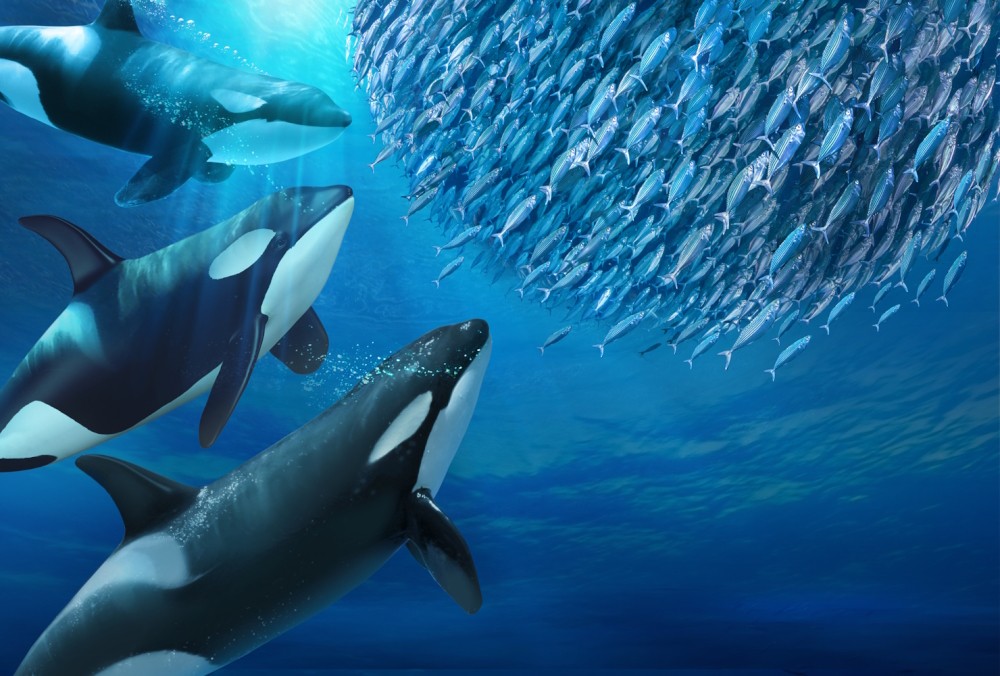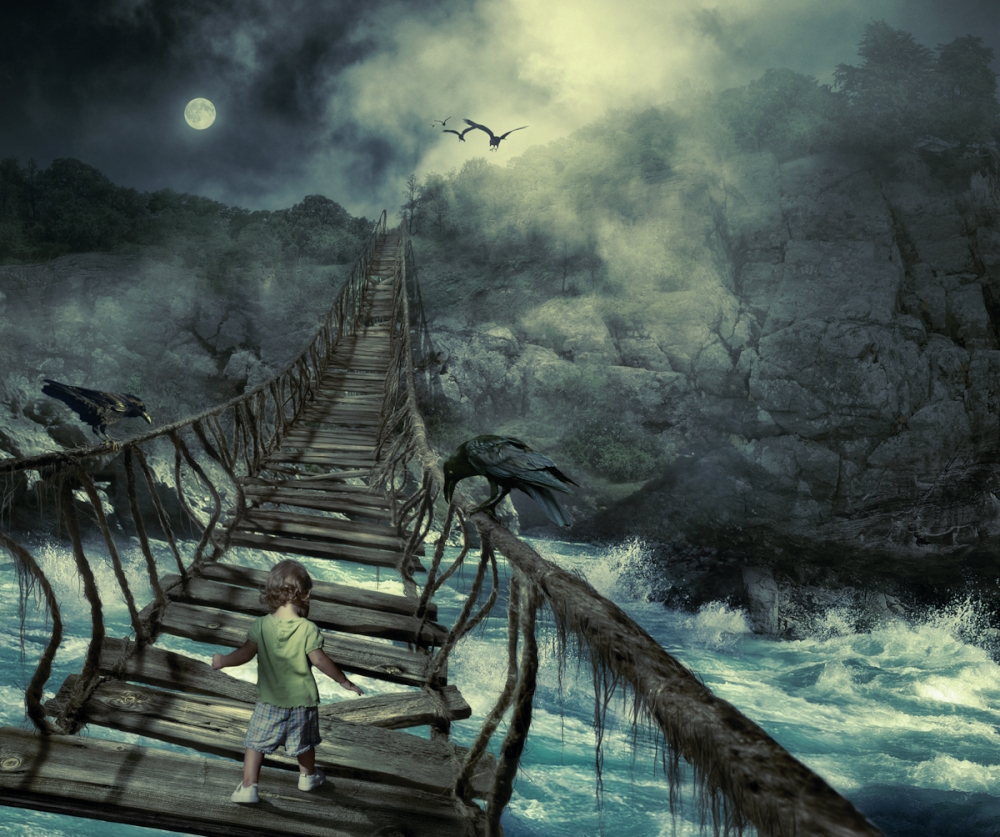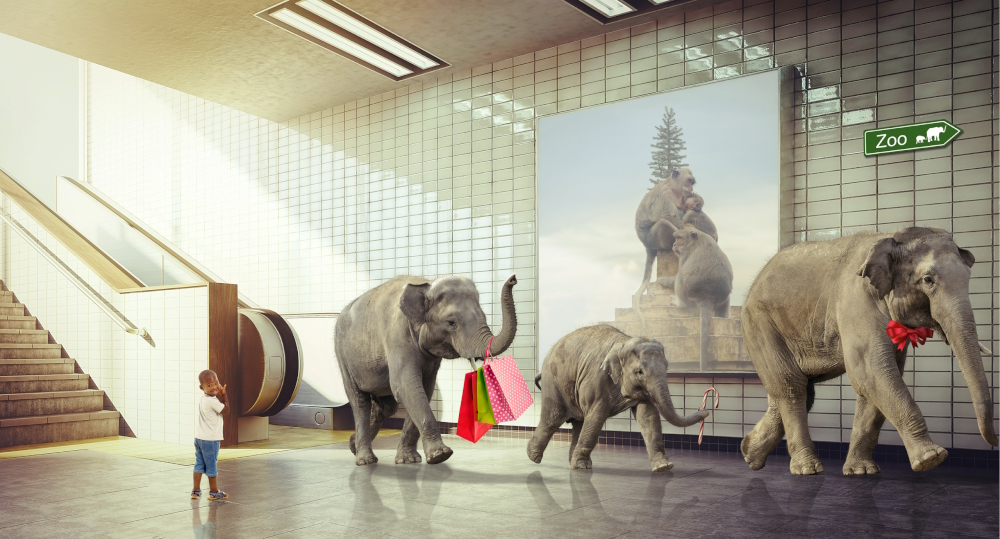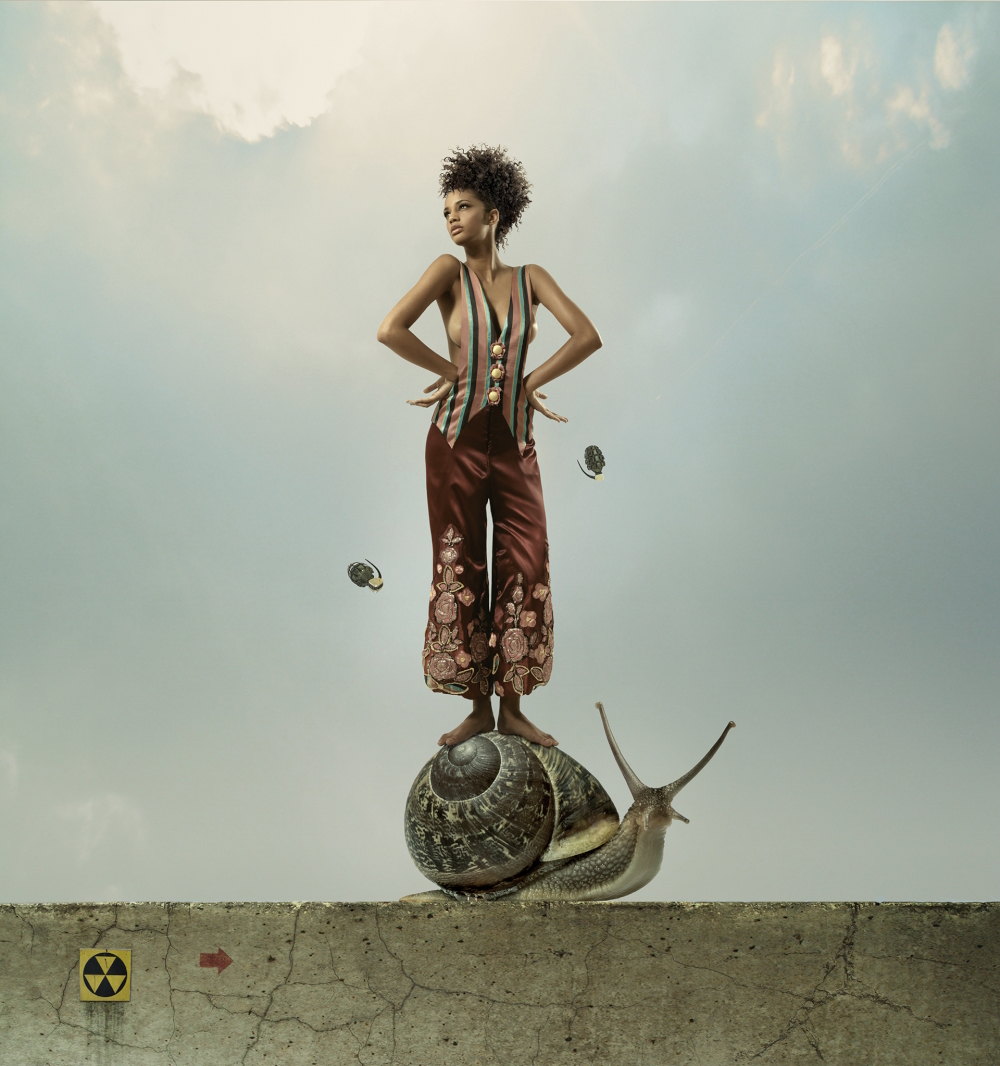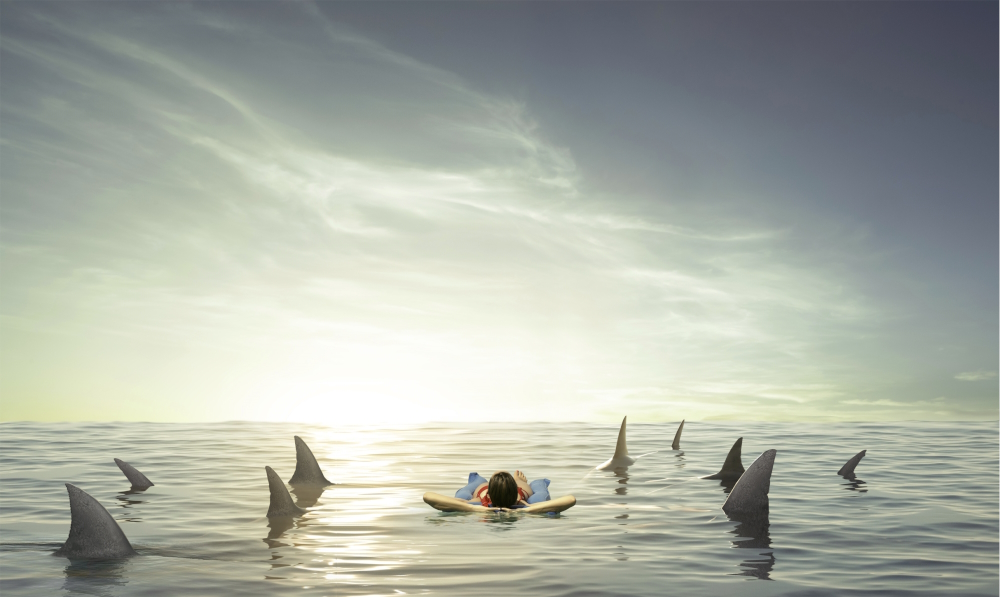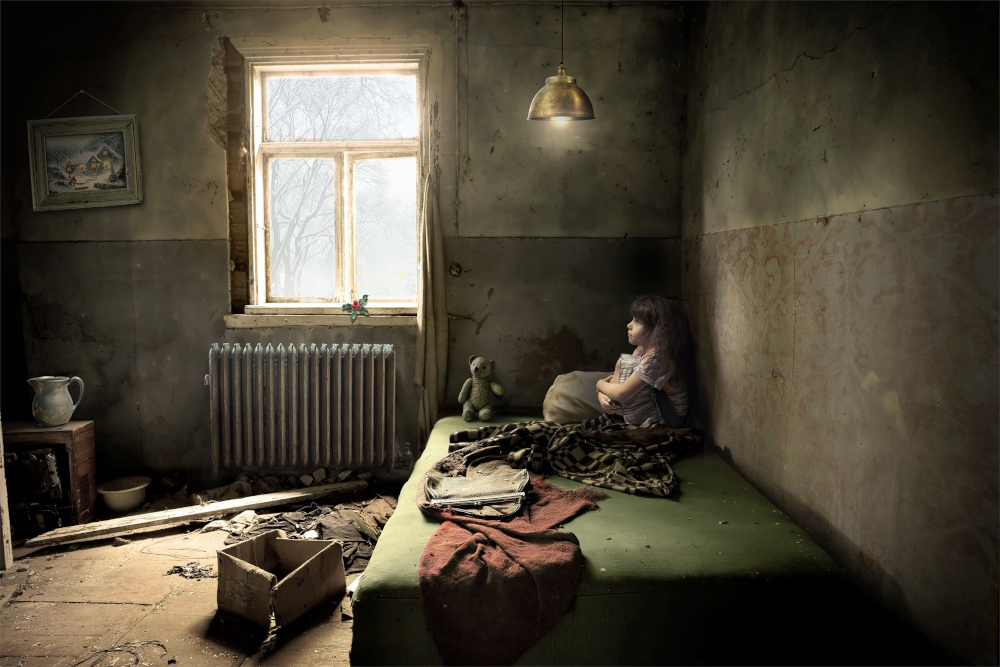Hugh Syme
internationally-renowned art director / traditional & digital illustrator / graphic artist / painter
Canada / US
Chances are very high that you’ve seen one of his artworks somewhere, or are one of the millions that even own one yourself! Hundreds of record-covers for world-famous acts like Aerosmith (Get a Grip), Celine Dion (Unison), Bon Jovi (New Jersey), Alice Cooper (A fistful of...), Iron Maiden (The X Factor), Kiss (Revenge), Rush (all since 1975) or Whitesnake (Serpens Albus 1987‚ Slip of the Tongue‚ Restless Heart) originated from him. And then there is his commercial artwork and motifs for international brands such as Audi, Apple’s iPod, Bacardi, Boston Beer, Coca Cola, Disney, Jaguar, Maserati, Patron, Porsche, Sea World, Tesla, Johnnie Walker, as well as editorials for Forbes Magazine and Co. This imaginative artist is an awarded man of many talents – graphic designer, (digital) illustrator, photorealistic painter, pianist/keyboardist, composer, arranger. Thanks to all of these abilities he creates extraordinary pictorial worlds that often bridge the gap between the present and the future, the real and the surreal, the music and the visual. The very busy man’s fanciful output fulfills the industry’s requirements: timeless/modern outstanding eye-catchers – sometimes even including a very special twist that’s discovered on second sight or closer look only!
Hugh Syme
internationally-renowned art director / traditional & digital illustrator / graphic artist / painter
Canada / US

What’s really weird: the artworks are familiar globally, but who has created them is unknown to most viewers. That’s the fate of many creatives like Hugh Syme. The Canadian * (1952 in Cornwall, East Ontario) started drawing and painting in childhood, inspired by M.C. Escher. The work of this Dutch graphic artist features “mathematical objects and operations including impossible objects, explorations of infinity, reflection, symmetry, perspective, truncated and stellated polyhedra, hyperbolic geometry, and tessellations” (Wikipedia). Later inspirations were drawn from the artists such as Vermeer, and Dali.
Hugh Syme studied at the Toronto New School of Art and York University in northeast England. His artistic skills were used in advertising first, but playing keyboards for the Ian Thomas Band, he created their album covers as well. So Neil Peart, drummer for Rush, acquired him to do the same for his rock band. The alliance that would foster their famous ‘Starman’ logo started in 1975 and lasted up until today. The coffee table book “The Art of Rush: Serving A Life Sentence” contains 292 pages of original illustrations, paintings, sculpture and miniature sets, photography, and the incredible stories behind each album that Hugh Syme has designed with the band.
The talented newcomer had noticed quickly that in the world of rock’n’roll he had fewer boundaries than in advertising. “You’re not selling,” the artist told LA Magazine. “You’re interpreting and you had more room for metaphor. That was a natural draw for me – to do something that was more creative.” The vague direction that he had in mind was confirmed by looking at the surreal album covers of the legendary English graphic design firm Hipgnosis (see interview with its co-founder Andrew Powell on Divine Spark).
While relocating to Los Angeles in the early 80’s during the now long gone time of record companies’ big budgets Hugh Syme would continue to realize his artistic visions for a total of 16 years as a California resident – first freelancing with CBS Record’s art department, then as 1st art director being responsible for the company’s national ad campaigns too and finally his years working with legendary A&R guru, Jon Kalodner, at the label Geffen Records. Their alliance would lead to Syme working with Jon on the bands he signed to Geffen — Aerosmith, Whitesnake, Sammy Hagar, Jimmy Page, Y&T, Black ’n Blue, Asia.
Over the due course of various decades Syme has produced a multifaceted body of work. “Hugh Syme’s imagery has elevated the world of album cover art by giving visually reflective meaning to the music inside the package”, said Sam Milgrom, founder/curator at LA’s Musichead Gallery. “He provides a deeper connection with stunningly creative works.”
This artist’s high-standard creations were honoured numerous times (including awards and nominations of Junos, the Canadian equivalent of the Grammys) and gained him an induction into the Album Cover Hall of Fame! No wonder that the member of the Premier Artists Collection is also in high demand by companies outside the music-biz – be it media (The Washington Post, LA Times, Toronto Star), movies (Miramax, Paramount, Universal Studios), tech (Denon, Microsoft, Panasonic, Sweetwater Sound), communication (AT&T), fashion (Jimmy Choo), books (all of Rush-drummer Neil Peart’s titles, also ‘Chemistry’ - a biography of Rush’, ‘Our House’ by Graham Nash, the 279 page collector's item ‘Comeback ´68 - Elvis: The Story Of The Elvis Special’, ‘I Hope You Dance: the power and spirit of song’, ‘Broadway Baby Book’) or jobs from numerous international advertising agencies and their clients.
“I always endeavor to be creative, whether it be for a music project, a commissioned portrait, a commercial assignment, or even for my personal collection. Apart from my art studio, I continue to spend time in my recording studio — writing and arranging — having arranged and played piano and keyboards on albums by The Yardbird’s drummer, Jim McCarty, guitarist Chris Herin etc. .”
Hugh Syme revealed when he introduced the online gallery of his signed art prints shop (access via his website). “Some of my favorites are pieces never or rarely seen by the public.” However different the topics might be, they all have one thing in common … what he calls “the realm of improbable reality”.
The father of three daughters, having decided to move his studio from Toronto in 2019, lives and works close to his “3 suns” in Indiana (US).
Interview August 2023
Deviating from the norm: visualizing the realm of improbable reality
INTUITION/IMAGINATION
?: How does intuition present itself to you – in form of a suspicious impression, a spontaneous visualisation or whatever - maybe in dreams?
Certainly in dreams … both sleeping and awake. Often, an evocative title will prompt me to harvest imagery, themes. Random concepts do occur, too. Sparked by a word, a voice, smell, sound — even the odd dèja vu. Uncontrolled thoughts … emotions.
?: Will any ideas be written down immediately and archived?
Much like when I write or arrange music … the arrangements remain in my head … sometimes I will note a sequence of chord changes or melody. Same with creating images … making notes rarely precedes the actual rendering. Sketches, occasionally.
I do have such an archive — but they reside mostly in my thoughts.
?: How do you come up with good or extraordinary ideas?
Gratefully, they keep presenting themselves to me. It’s either random, dream-based, or driven by a response to a theme or thought. The act of doing and remaining productive has (for me) kept that creative process in play.
?: Do you feel that new creative ideas come as a whole or do you get like a little seed of inspiration that evolves into something else and has to be realized by endless trials and errors in form of constant developments until the final result?
Both. Normally the former … but, developing a final visual is, by its own nature, an evolution … a process. So, much like arranging music, there will naturally be stages during the arrangement through to a final image. Sometimes a song comes between breakfast and lunch, and sometimes we labor for ages until it is resolved.
?: What if there is a deadline, but no intuition? Does the first fuel the latter maybe?
A deadline is usually in response to an assignment or event. An assignment or commission usually has a theme, or visual built into the title or required concept. So, we are already inspired by, and responsible to that premise. Title, lyric, theme etc. And, a deadline keeps you focused and responsible while we endeavor to produce our best work. Even self-imposed deadlines keep us disciplined, focused, and productive. It also, of necessity, requires that we learn when to “walk away”. Perfection can be the enemy of good.
INSPIRATION
?: What inspires you and how do you stimulate this special form of imaginativeness?
I already tend to live in the realm of improbable reality. So, my visions and inclinations to tilt the mirror away from the expected is always a prime motivator. To deviate from the norm.
?: How do you filter between ideas that are worthwhile pursuing and bad ones that you just let go of?
I think we intuitively know when not to guide / hammer a square peg into a round hole. Not to say that improvisation won’t lead to (some) inspired moments, using music as a metaphor. We can witness trial-and-error on paper or canvas or a piano … or do so entirely in our thoughts. A balance between preconception, a schematic … and the beautiful unknown.
?: Does an idea need to appeal to you primarily or is its commercial potential an essential factor?
Sometimes those two notions can coexist without forsaking the integrity of the work. Commerciality may not be the motive for creating a piece … but, we can also be unconsciously (or intentionally) aware of an image’s ability to reach, or appeal.
?: Do you revisit old ideas or check what colleagues or competitors are up to at times?
Rarely will I check or compare with any sense of competition. Just interest and curiosity. But, I do have an archive of yet-to-be rendered images. Sometimes they emerge for my own personal portfolio or a gallery event — sometimes a title or theme might happen to present itself, that could fit with one of my archived visuals / concepts. That’s happened on several occasions, actually.
CREATIVITY
?: What time or environment best suits your creative work process — for example, a time and place of tranquility or of pressure? Which path do you take from theory or idea to creation?
Environment can affect our creative inclinations, certainly — either from direct exposure or from its subtle impression on us. Even a change in light … Serenity or chaos both have their places. Because I have worked in many countries … I find that my focus can be constrained to remain within a frame of reference (the canvas, or the screen). Looking up to see the Pacific Ocean, or a cornfield doesn’t usually affect the task at hand — unless the visual is born of the location itself.
As to the path … as mentioned … the vision can be very immediate and clear … or be vague, but be seductive or evocative enough to pursue.
I used to be a night person. I tend to rise at dawn now … and do, until I don’t.
?: What’s better in the realization process — for example, speed and forcing creativity by grasping the magic of the moment or a slow, ripening process for implementation and elaboration?
They both work … and have both served me well. Magic “of the moment” is just that, magic. Then there is the disciplined pursuit of evolving some spark that is feeling worthwhile to nurture.
?: How important are self-doubt and criticism by others during such a process?
It’s probably good to practice self assessment (even experience doubt) … as long as we remain brave enough to persevere. You can’t please everyone ….
Stage fright has helped many performers achieve their best work — and be responsible to their audiences.
?: Is it better to be creative on your own, to trust only your own instincts, or to work in a team?
The moment something is technically an “assignment” … you’re already in a “team”. You usually have a client, or art director in those instances. Gratefully, most people approach me for my own style, my input, and how I approach my images. So, unless it is gathering with other musicians … I don’t generally opt for plurality in my visual art endeavors. Video and film are another matter. Then we are teaming.
?: In case of a creative block or, worse, a real failure, how do you get out of such a hole?
Silent, private failure or lapses are one thing. We can accommodate and endure those times with patience and tenacity. It’s just you and the work. But, failing to deliver quality work, or to meet a deadline has never happened to me (gratefully).
?: Should a creative person always stay true to him- or herself, including taking risks and going against the flow, or must the person, for reasons of commercial survival, make concessions to the demands of the market, the wishes of clients and the audience’s expectations?
If you’re lucky to have such an “audience” or following … then, one can tend towards a brave and true stance that your own (evolving) work will be accepted — at least more readily embraced — pending the inevitable verdicts!
As for the prevailing trends in the “audience” of pop culture … again, you either consciously change with those trends (which often compromises your own vision and true self) … or you can learn (hopefully never borrow) from those trends, as a guide to a resolution.
One of these observations remains faithful to one’s own personal truth as an artist …. The other, by necessity, serves the other masters, “pop culture” … and/or the commissioner or art director (sometimes clueless or tasteless). Being flexible and versed in the application of various media (traditional or digital) does’t mean having to betray what is essentially good. Having said all that … we sometimes will choke on the notion that “the client is always right”.
?: How are innovation and improvement possible if you’ve established a distinctive style? Is it good to be ahead of your time, even if you hazard not being understood?
That’s a tender balance. An established or recognizable style often serves a vast expanse of one’s career. The goal is to remain progressive and experimental (brave) — even if you stay within the neighborhood of that established “look”. A good credo is “keep them guessing” or “gotta deviate from the norm”. I have solved many visual tasks with a wide range of mediums. Traditional drawing, painting, print-making. As well as sculpture, miniature building, CGI.
These are all just tools …. The essence of any finished work is the image, the story, the theme, the conveyance of an intended visual or concept.
?: When does the time come to end the creative process, to be content and set the final result free? Or is it always a work-in-progress, with an endless possibility of improvement?
If it’s your own artwork, without regard to client or deadline … then it’s up to the artist to say when it’s ready. Even a portrait can take 16 years. Just ask Mona. Otherwise … any hard deadline needs to be honored … if we are to maintain that time honored collision between art and commerce. Some call it survival.
Always embrace the possibility of improvement, yes.
Practice in the studio …. Not on stage.
?: Do you have a clue why your creations are exactly the way they are?
I definitely have some recurring themes …. But, I prefer to let those manifest as unconsciously as possible. Some darkness or melancholy have their place in my favorite music and artworks. Never sentimental or woeful … but, emotive, whimsical, improbable, unsettling sometimes, and hopefully always engaging.
Quiet and introspective — or just plain rockin’ and uninhibited. Subtle or outrageous.
But keeping it varied.
SUCCESS
?: “Success is the ability to go from one failure to another with no loss of enthusiasm.“ Do you agree with Winston Churchill’s quote?
Yes. It’s ideal. Not always easy …. But we’re here to stay.
?: Should or can you resist the temptation to recycle a ‘formula’ you're successful with?
As long as the formula feels right and serves a particular image or theme. But, no more than any (good) musicians rest on their laurels, intentionally or perpetually emulating themselves — nor should we. But some core style or eventual recognizability is probably inevitable …
?: Is it desirable to create an ultimate or timeless work? Doesn’t “top of the ladder” bring up the question, “What’s next?” — that is, isn’t such a personal peak “the end”?
That reverts to the simple observation that perfection is the enemy of good. If you have achieved your masterpiece — bravo! So, having accomplished that … do you still enjoy the process? Are you still driven to spend your hours in the studio? — decide whether you retire or go on. It’s also pretty narcissistic the say you’ve “peaked”. You’re only as good as your last piece. One man’s mountain is another man’s hill.
MY FAVORITE WORK:
Wow — My mediums and themes are so conceptually diverse, and all over the place. It’s pretty difficult to isolate any one piece that speaks to my work as a whole. Hopefully that’s what keeps it interesting and followed.
